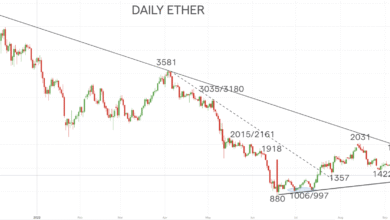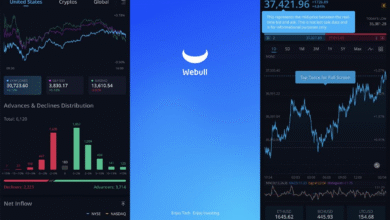Nvidia Absence at AI Conference Highlights Market Competition

Nvidia’s absence at the AI conference in Shanghai this year has raised eyebrows in the tech community. As the U.S. chip giant withdrew from the spotlight, its Chinese competitor, Huawei, seized the opportunity to showcase its innovative Ascend AI chips prominently at the event. With major players like Tesla and Google present, Nvidia’s decision left a notable gap in the lineup of exhibitors at this pivotal AI gathering. Analysts speculate that Nvidia’s current market competition, particularly from Huawei and other emerging Chinese giants, could shape the future landscape of AI technology. As China continues to push forward in AI advancements, the implications of Nvidia’s absence might resonate throughout the industry, signaling a critical moment in U.S.-China tech rivalries.
The recent World AI Conference in Shanghai has become a major platform for highlighting advancements in artificial intelligence, especially among Chinese technology firms. In stark contrast to Nvidia’s notable absence, Huawei took center stage with its Ascend AI technology, demonstrating the fierce competition within the AI space. This gathering, which draws attention from global giants, illustrates how companies are rapidly evolving and what the future may hold for the sector. As Asian competitors rise, the landscape is shifting in ways that may redefine international market dynamics. Understanding these developments is crucial as nations stake their claims in the race towards AI supremacy.
Nvidia’s Absence at the Shanghai AI Conference
Nvidia’s conspicuous absence at the World AI Conference in Shanghai has raised eyebrows in the tech community. With competitors like Huawei showcasing their advancements, many are left wondering about Nvidia’s strategy in a market that is rapidly evolving. The lack of a booth at this major AI event comes soon after a high-profile visit from Nvidia’s CEO, Jensen Huang, to Beijing, leading to speculation regarding the company’s future prospects in a market increasingly dominated by Chinese technology.
The decision not to participate may reflect Nvidia’s caution amid mounting geopolitical tensions and export restrictions that have particularly affected their operations in China. Analysts suggest that without a significant presence at such pivotal conferences, Nvidia risks losing ground in a critical market where local competitors like Huawei and others are fiercely innovative. Huawei’s focus on its Ascend AI chips, along with a robust display at the conference, underscores the competitive landscape Nvidia must navigate.
Huawei’s Dominance with Ascend AI Technology
Huawei’s impressive showcase of its Ascend AI technology at the AI conference exemplified the company’s ambition to be a global leader in AI chip development. With its Atlas 900 A3 SuperPoD, Huawei demonstrated a sophisticated computing framework designed to run AI models more efficiently than ever. This contrasts sharply with Nvidia’s offerings, highlighting the distinct approaches of both companies in the field of artificial intelligence, particularly in how they manage their chip designs and architectures.
Furthermore, Huawei’s ability to link 384 Ascend chips for enhanced AI performance suggests a forward-thinking strategy that prioritizes scalability. While individual Ascend chips might not surpass Nvidia’s advanced Blackwell offerings in power, their cumulative impact showcases Huawei’s innovation and commitment to overcoming hurdles posed by export restrictions. As China continues to assert itself in AI advancements, firms like Huawei are poised to fill market gaps left by competitors like Nvidia.
Market Competition in AI Chips: Nvidia vs. Huawei
The current competitive landscape for AI chips is dominated by a fierce rivalry between Nvidia and companies like Huawei. Nvidia has long enjoyed a reputation as the leader in the sector, driven by its advanced GPU technologies. However, with Chinese firms ramping up their capabilities and innovations, including high-performance AI solutions like Huawei’s Ascend chips, the pressure on Nvidia is mounting. As showcased at the AI conference, competitors are not merely looking to fill niches but are actively trying to challenge Nvidia’s dominance in the market.
Reports indicate that despite the perceived power differences between Huawei’s offerings and Nvidia’s technologies, the rapid advancements in China’s AI landscape could signal a shift in market dynamics. While Nvidia’s GPUs symbolize the pinnacle of performance for many AI applications, the emergence of efficient and powerful alternatives could level the playing field, putting pressure on Nvidia to continue innovating and adapting in a changing environment.
China’s AI Advancements and Global Impact
China’s aggressive push into artificial intelligence through investments in local companies like Huawei showcases the country’s ambition to lead globally in AI technologies. The World AI Conference illustrated how Chinese tech firms are not only participating in the AI revolution but also actively shaping the future with their innovative solutions. This trend reflects a growing confidence in homegrown technology, aligning with China’s national agenda to enhance its technological prowess.
Furthermore, as highlighted by recent developments and announcements at the conference, including plans for a global AI cooperation organization, China’s role in global AI initiatives is expanding. By fostering an environment that encourages local technological innovation, China aims to create a self-reliant ecosystem capable of competing against established players like Nvidia, making significant strides in AI advancements that could redefine industry standards.
The Future of AI Chips: Trends and Innovations
As AI technology evolves, the demand for innovative and efficient AI chips is surging, leading to significant advancements in chip design and architecture. Companies are focusing on both enhancing performance and improving energy efficiency to create power-friendly solutions that meet the needs of modern AI applications. The AI conference in Shanghai demonstrated this trend, with numerous exhibitors showcasing cutting-edge technologies that prioritize performance without compromising on power consumption.
Innovations in AI chips are likely to shape the future, with a growing emphasis on edge AI solutions that allow for real-time data processing and enhanced user experiences. As competitors like Huawei continue to invest in robust AI systems, the entire landscape will shift, prompting established firms like Nvidia to pivot their strategies towards more sustainable and versatile offerings that cater to emerging market needs.
Global AI Cooperation and Competition
The recent announcements surrounding global AI cooperation highlight the interconnected nature of the technology landscape. At the World AI Conference, Chinese Premier Li Qiang’s proposal for an international AI cooperation organization signals a shift toward collaborative efforts in AI development. This indicates that while competition among tech giants like Nvidia and Huawei is fierce, there is also recognition of the need for shared advancements and dialogue to drive the industry forward.
Such cooperative frameworks could lead to significant innovations that transcend individual company capacities, fostering environments where shared knowledge and resources can enhance AI technologies globally. However, it will also challenge dominant market players to adapt quickly, as emerging startups and established firms alike will benefit from a broader collaborative platform that could expedite advancements in AI applications.
Challenges for Nvidia in the Chinese Market
Nvidia’s current predicament in the Chinese market epitomizes the challenges foreign firms face amidst stringent export regulations and growing local competition. As Huawei and other Chinese companies make significant strides in AI technology, Nvidia has found itself needing to navigate a complex web of geopolitical tensions that complicate its operations and market presence in China. Despite the potential of the Chinese market, these challenges create uncertainties regarding Nvidia’s future strategies.
The recent restrictions on selling advanced chips to China have hampered Nvidia’s ability to tap into one of the largest AI markets globally. Analysts speculate that Nvidia must develop new strategies, possibly focusing on partnerships or localized solutions that can remain conducive under current regulations. The company’s ability to innovate within these constraints will largely determine its ability to retain competitiveness in a market that is rapidly evolving under the influence of domestic players.
Emerging Players in the AI Chip Industry
The World AI Conference showcased a diverse array of players in the AI chip industry, highlighting the emergence of startups and established companies willing to innovate. Beyond giants like Nvidia and Huawei, firms such as Moore Threads and Yunsilicon are gaining traction, contributing to a rich tapestry of technological advancement within the sector. With their presence, these emerging players are reshaping how AI chips are developed and utilized, indicating a vibrant ecosystem ready to take on established competitors.
These newer companies are often able to pivot quickly and respond to market demands, offering niche solutions tailored to specific industries or applications. As highlighted through various showcases at the conference, the emphasis on collaboration among startups fosters an environment where innovation thrives, potentially leading to breakthroughs that could redefine performance benchmarks within the AI chip market.
Looking Ahead: The Next Phase of AI Technology
As we look forward to the future of AI technology, industry experts predict a continual evolution in both design and application of AI chips. The landscape will not only benefit from advancements in hardware but also from the innovative approaches to utilization across sectors such as healthcare, finance, and education. The focus on efficiency and performance will remain paramount, driving competition among both established and emerging companies.
Moreover, as AI continues to permeate everyday life, ethical considerations and regulatory frameworks are likely to play an increasingly important role. Firms will need to engage with these issues proactively, ensuring that technological advances align with societal values and government policies, especially in an interconnected global landscape. This holistic view will be essential for sustaining competitive advantages and fostering responsible innovation in AI technology moving forward.
Frequently Asked Questions
Why was Nvidia absent at the AI conference in Shanghai in 2025?
Nvidia did not have a booth at the 2025 World AI Conference in Shanghai, raising questions about its absence at a major event where its Chinese rival, Huawei, promoted its Ascend AI chips. This absence comes after Nvidia faced restrictions on selling advanced chips to China and highlights the company’s cautious approach amidst ongoing U.S.-China tensions.
How does Nvidia’s absence at the AI conference affect its market competition?
Nvidia’s absence at the AI conference in Shanghai potentially impacts its market competition by allowing rivals like Huawei, which showcased its Ascend AI technology, to gain visibility and traction. This situation could shift the competitive landscape in China’s AI market, especially as Huawei aims to capture a portion of Nvidia’s customer base amid export restrictions.
What is the significance of Huawei’s display at the AI conference?
At the World AI Conference, Huawei’s large display centered around its Ascend AI chips, demonstrating its capabilities in AI technology. This showcase not only emphasizes Huawei’s advancements in AI but also signifies its strategic positioning to challenge Nvidia’s dominance in the AI chip market.
What potential impact does Huawei’s Ascend AI technology have on Nvidia?
Huawei’s Ascend AI technology could significantly impact Nvidia by providing a competitive alternative in the AI chip market. The Ascend chips, particularly when combined in large systems like the Atlas 900 A3 SuperPoD, may offer performance that rivals Nvidia’s offerings while catering to the growing domestic demand for AI capabilities in China.
How does the absence of Nvidia and the presence of Huawei affect AI advancements in China?
Nvidia’s absence from the AI conference alongside Huawei’s prominent display suggests a potential shift in AI advancements within China. As competitors like Huawei introduce their Ascend AI technology, the Chinese market may increasingly rely on domestic alternatives, potentially propelling local innovations in AI infrastructure.
What led to Nvidia stopping its chip sales to China?
Nvidia halted its chip sales to China due to new U.S. export restrictions aimed at limiting China’s AI capabilities. These regulations have been tightened over the past three years, complicating Nvidia’s ability to sell its most advanced chips, including potential products tailored for the Chinese market.
What are the implications of the AI conference for the future of AI chip development?
The World AI Conference highlights the need for ongoing innovation in AI chip development, particularly as Chinese companies like Huawei showcase alternatives to Nvidia’s products. As the competition intensifies, we may see accelerated advancements in both AI technologies and their underlying hardware architectures.
What strategies can Nvidia employ to regain market presence in China?
To regain its market presence in China, Nvidia could consider re-establishing partnerships with local companies, showcasing new AI chip solutions tailored for the Chinese market, and seeking to navigate export restrictions more effectively to resume sales of products like the H20 chips.
| Key Points | Details |
|---|---|
| Nvidia’s Absence | Nvidia did not have a presence at the World AI Conference in Shanghai, despite previous optimism about re-entering the Chinese market. |
| Chinese Competition | Huawei showcased its Ascend AI chips and computing system, attempting to fill the void left by Nvidia’s absence. |
| Other Exhibitors | Tesla, Google, Amazon Web Services, Siemens, and other firms had booths, showing a wide range of AI applications. |
| Performance Comparison | Although Huawei’s Ascend chips are less powerful individually, their system’s design allows for significantly more chips than Nvidia’s systems. |
| Market Situation | Nvidia’s market value remains high, but U.S. restrictions limit its sales in China, a potentially lucrative market. |
Summary
Nvidia’s absence at the AI conference has raised questions about its strategy in the Chinese market amidst growing competition. Although U.S. tech firms like Tesla and Google showcased their innovations, Huawei’s impressive display of its Ascend AI chips may suggest a shift in the landscape of AI technology in China. With the ever-evolving regulatory climate and China’s aggressive push for its domestic chip development, Nvidia must navigate these challenges carefully to maintain its leadership position in the global AI sector.




